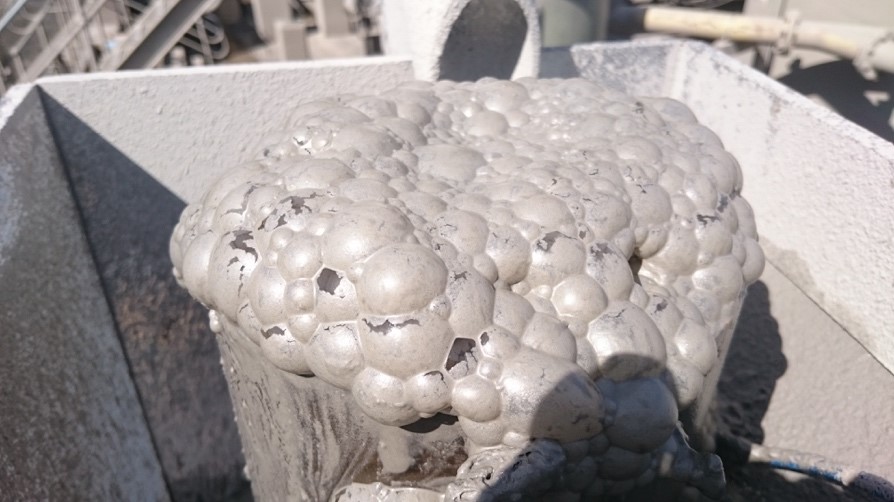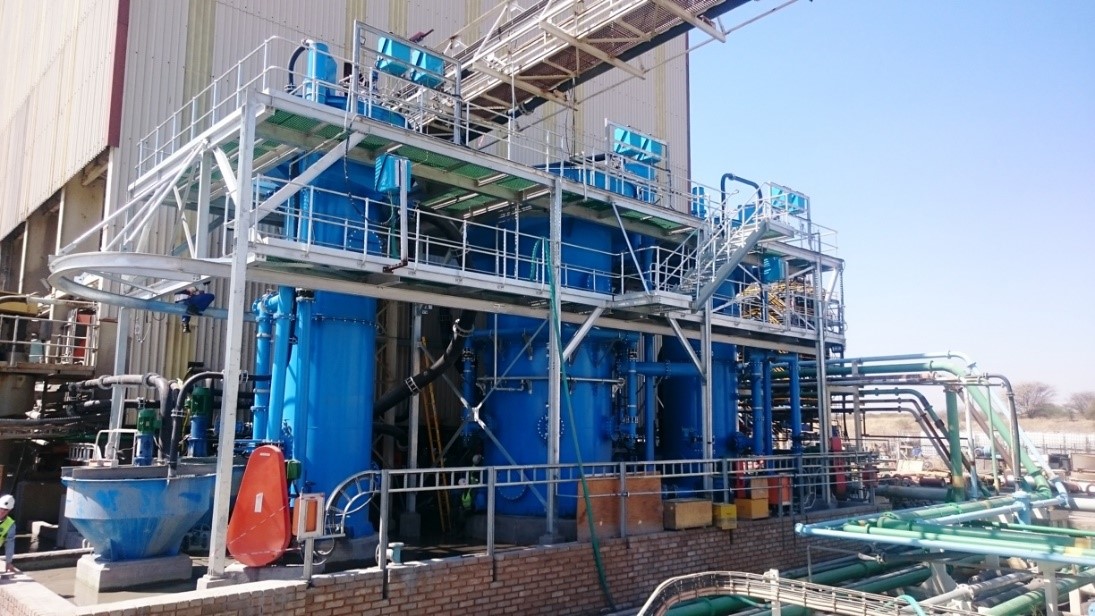UNDERSTANDING MINERAL FLOTATION
Mineral column flotation was first used in the mining industry. It is regarded as one of the greatest processing technologies of the 20th century, revolutionising the industry in some respects. Not only does it improve the ability to recover valuable minerals such as Copper, Platinum, Lead and Zinc, it also ensures optimal recovery of valuable metals from a much lower grade.
Before the flotation process can work, the ore containing the mineral needs to be liberated and then milled down to fine particles so that the various minerals are exposed (liberated). As a guide and based on the mineralogy of the ore, roughly 80% of the particles should be passing 75µm (micron) prior to the flotation extraction process of Platinum Group Metals (PGM’s). During comminution (milling) the ore is mixed with water to obtain a slurry. Flotation promoting Chemicals are added to mask/alter the surface properties of the required minerals. The property it acquires is called hydrophobicity (“dislikes water”). However, not all minerals are naturally hydrophobic, the particular chemical that will be used depends completely on the mineralogy of the mineral. A good example is Sodium Isobutyl Xanthate (SIBX) also know as a collector, which is added to the slurry in order to selectively collect the desired floatable particles (conditioning period). The slurry containing both hydrophobic and hydrophilic (“likes water”) particles is then pumped to agitation tanks known as flotation cells. The slurry inside the flotation cell is aerated in order to produce bubbles.

The hydrophobic particles will attach to the air bubbles which then carry the collected particle to the surface and produce a froth which is then extracted at the top of the flotation cell surface. The froth overflows into collection launders and the result is a concentrate of the desired mineral. A frothing agent is added into the slurry mixture to stabilize the bubble formation in the pulp phase and in turn creating a stable froth allowing selective drainage of entrained Gangue (unwanted minerals) and assisting with increased flotation kinetics. The efficiency of the entire extraction process will be determined by a number of factors:
- The ability of the particle to successfully attach to a bubble which in turn is carried to the surface were the froth is extracted via launders.
- Movement or transport of collectible particles between the pulp phase and the froth will determine the extraction efficacy.
- Flotation is normally undertaken in several stages (roughers, cleaner, scavengers etc.) to maximize the recovery of the target mineral and the concentration of those minerals in the concentrate, while minimizing the energy input and running costs.
Flotation columns can be used in the process from a rougher application to a re-recleaner. This is due to the fact that the Flotation column can be specifically designed to run at a target mass pull and in turn a specific recovery/upgrade ratio according to the test work done.

Please feel free to contact PrepQuip for any enquiries related to Flotation applications and Minerals Processing solutions.

